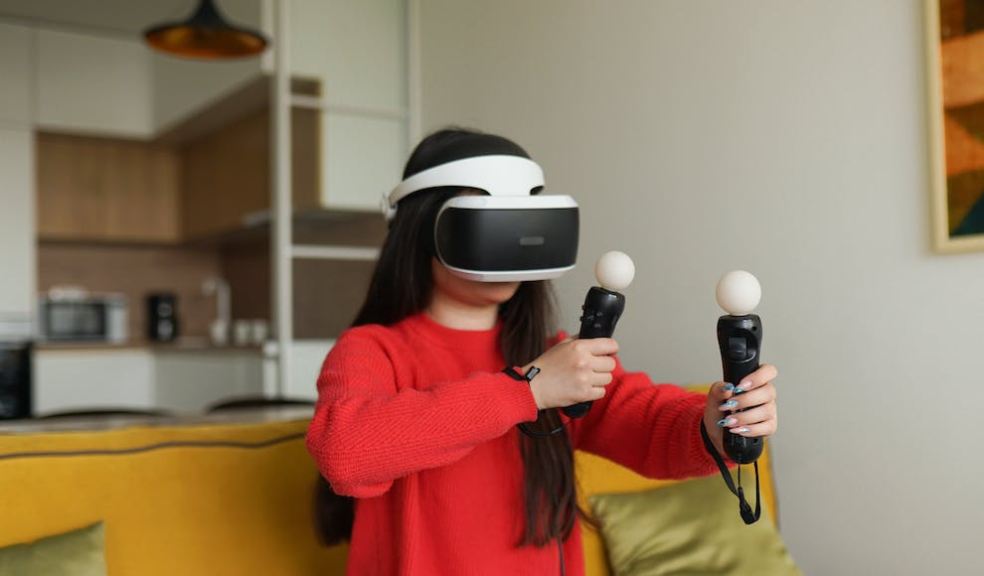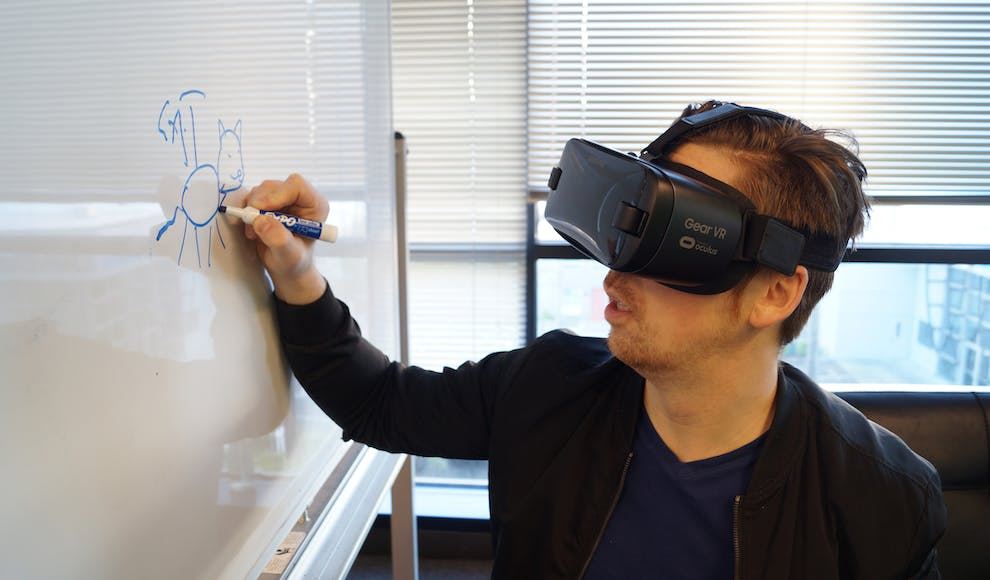
VR in Jobs and Entertainment: Is it all hype?
Virtual Reality (VR) emerged as a crucial innovation, straddling the worlds of professional environments and entertainment. The United States, leading the global gaming market with revenues of $54.9 billion in 2022, and China, securing its place with approximately $44 billion in video gaming revenues, highlight immersive technologies' substantial economic impact and potential.
In 2024 the global gambling market is projected to soar, reaching an estimated $260.44 billion, propelled by a Compound Annual Growth Rate (CAGR) of 7.1%. This forecast underscores the financial magnitude and signals a year ripe with potential for the VR sector.
As VR technologies weave their way into various sectors, promising to revolutionise user experiences with unparalleled immersion and interaction, dissecting the hype from the tangible impacts becomes imperative.
Applications in Job Environments
The adoption of Virtual Reality (VR) and Augmented Reality (AR) technologies in the workplace has significantly increased, driven by the pandemic's push towards remote working and the need for innovative training and collaboration solutions. These technologies are transforming various aspects of job environments, notably in human resources, training, immersive collaboration, and enhancing virtual meetings.
In the HR sector, VR and AR are revolutionising the recruitment processes by allowing candidates to experience their future job roles through virtual reality scenarios, such as the British Army's use of VR experiences for recruits. This immersive approach attracts potential candidates and offers them a glimpse into their future work environment from the comfort of their homes.
The AR and VR technologies are not limited to enhancing gaming and entertainment experiences but have expanded into training and education, retail experiences, collaborative working processes, and improving customer experiences across multiple industries. The projected market growth to $297 billion by 2024 underscores AR and VR's increasing adoption and potential to transform industries by offering unique and engaging experiences.
Entertainment Sector
The entertainment sector's encounter with Virtual Reality (VR) is marked by a blend of innovation and growing trends alongside existing challenges that shape its adoption and impact. The VR landscape in 2024 is significantly influenced by technological developments that promise to revolutionise gaming, film, and more through immersive experiences and new storytelling forms.
One of the key trends identified is the rise of cloud-based processing, allowing VR users to enjoy high-quality content without the need for expensive hardware. This trend facilitates gaming and collaborative experiences, such as virtual meetings and training, making it a versatile tool for personal and professional use.
In the realm of film and television, VR has opened up new avenues for both creators and audiences. Directors can now craft experiences that break the boundaries of traditional storytelling, allowing viewers to become active participants within the narrative. VR films provide an entirely new level of immersion, enabling viewers to explore scenes from multiple perspectives, fostering a sense of presence that traditional cinema cannot match. Additionally, VR technology has given rise to virtual theatres where users can gather and watch films together, regardless of geographical location, fostering a new sense of community among moviegoers.
In the realm of video games, VR technology has propelled gaming experiences to unprecedented levels of realism and interactivity. Players can now step into the shoes of their favourite characters, fully inhabiting virtual worlds with a level of immersion that transcends traditional gaming. VR games offer players a sense of agency and presence that traditional gaming platforms cannot replicate, allowing for deeper emotional connections and more visceral experiences. Furthermore, VR has expanded the horizons of multiplayer gaming, enabling friends from across the globe to come together and collaborate in virtual spaces, fostering social connections and camaraderie. As VR technology continues to evolve, the entertainment industry is poised for further innovation, with endless possibilities for new and captivating experiences across film, television, and video games.
Virtual reality (VR) technology in casinos offers an immersive gaming experience that closely mimics the physical presence within a casino environment, allowing players to interact with games and other users in an incredibly lifelike manner. This technological advancement is not only reshaping the future of gaming but also enhances the appeal of online gambling platforms, including those operated by highly-rated UK live dealer casino operators, by providing a more engaging and interactive experience.
Current State of VR Technology
The current state of Virtual Reality (VR) technology reflects significant innovations and an expanding range of applications across various sectors. Yet, it also highlights some persistent challenges that affect its widespread adoption.
In terms of market dynamics, North America remains a leader in the VR industry, thanks to its early adoption of innovative technologies and numerous startups focusing on VR solutions. This has fostered a competitive environment with significant players like Oculus, Google, Samsung, Sony, and Lenovo dominating the market. Recent initiatives have seen loyalty programs and payment cards launch for the metaverse, indicating a broader acceptance and integration of VR into commercial applications.
The AR and VR markets are expected to reach $297 billion by 2024, showcasing a dramatic increase from the past decade. This growth is propelled by the demand for immersive experiences, affordable devices, and the COVID-19 pandemic, which has accelerated the adoption of AR/VR for remote engagement.
Challenges and Limitations
The widespread adoption of Virtual Reality (VR) in various job environments encounters several challenges that could hinder its progress toward becoming a mainstream technology. These challenges include high costs, which remain a significant barrier for both consumers and developers.
The development of VR applications can range between $30,000 and $150,000, making it a substantial investment with high upfront costs. This financial aspect is crucial as it affects consumers' willingness to purchase VR headsets and, consequently, the demand for VR applications.
Latency issues also present a significant challenge, as they can disrupt the seamless experience users expect from VR technology. Engineers are exploring solutions such as mobile edge computing to reduce latency and improve user experience. Cybersecurity and data privacy concerns are increasingly prominent, urging developers to embed strong security measures into their apps to protect users' information and ensure their safety while using VR applications.
Additionally, spatial orientation issues and the physical discomfort associated with using VR headsets, such as visual fatigue due to conflicting visual and physical cues, further complicate the user experience. These challenges necessitate continuous innovation and refinement in VR technology to address and mitigate users' limitations.

Conclusion
While VR promises to transform job environments and entertainment experiences, a critical evaluation of its practical applications is necessary. Integrating VR into various sectors is ongoing, with successes and challenges. By understanding the current state of VR technology, acknowledging its challenges, and exploring its potential, we can navigate the hype and work toward harnessing VR's full capabilities for the future.













